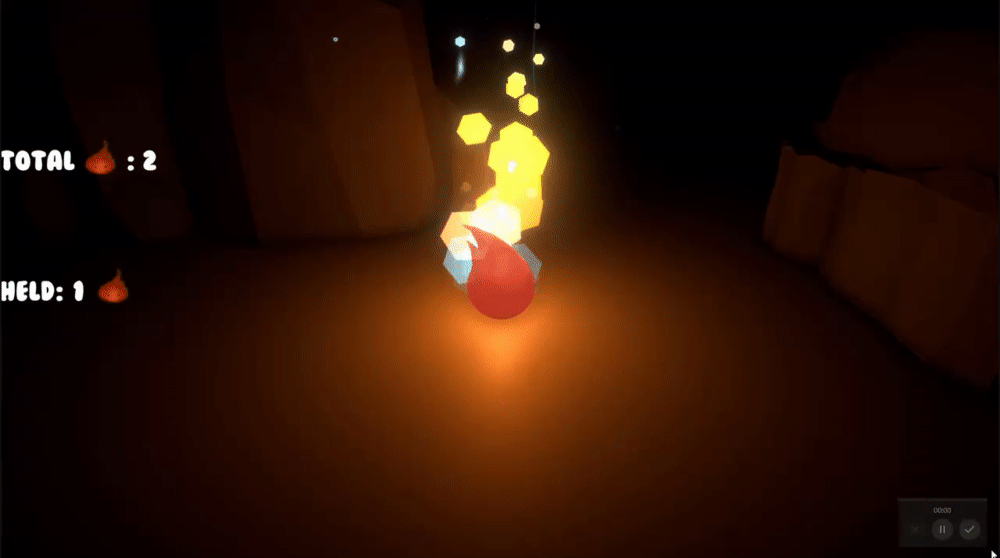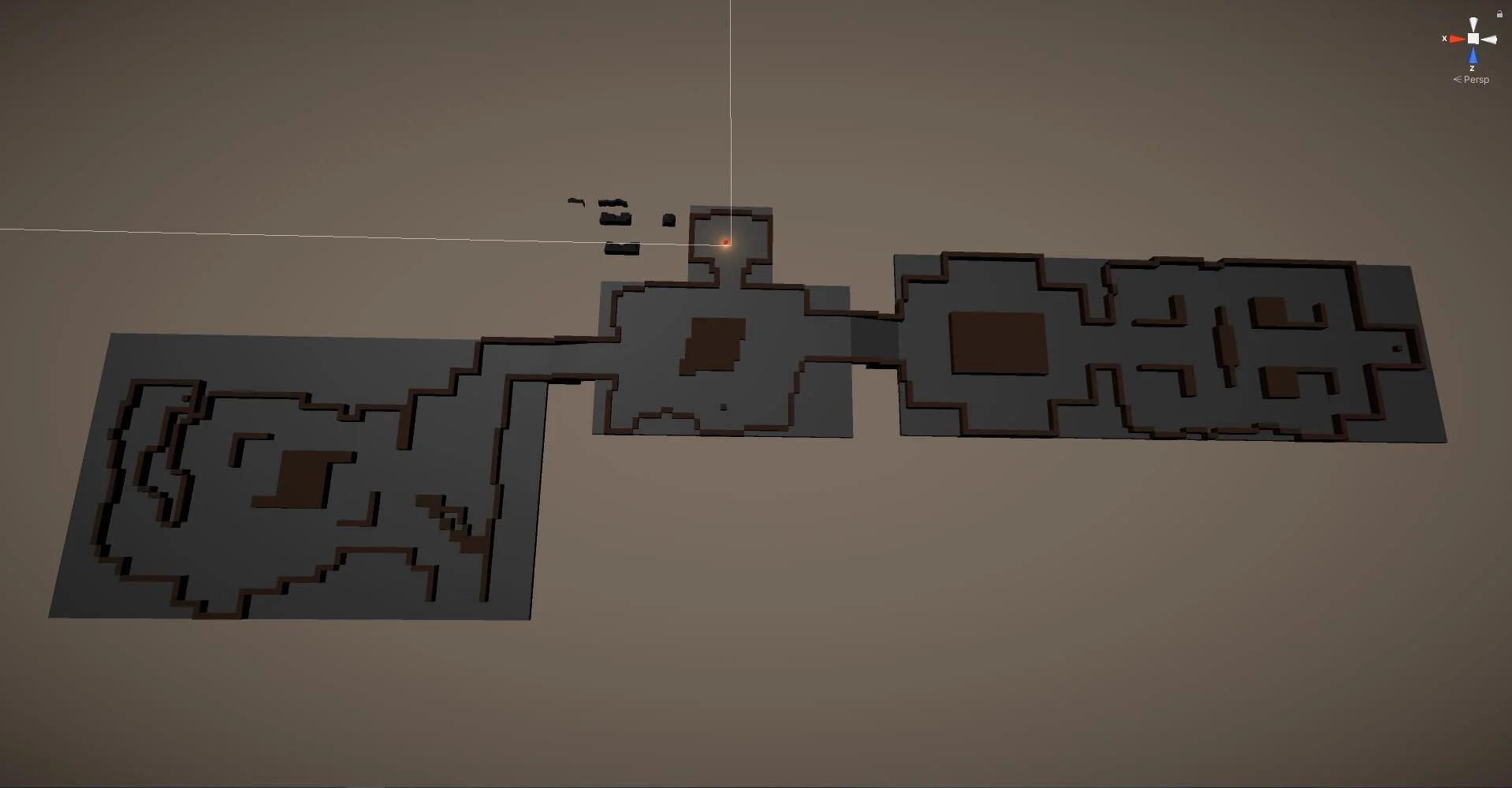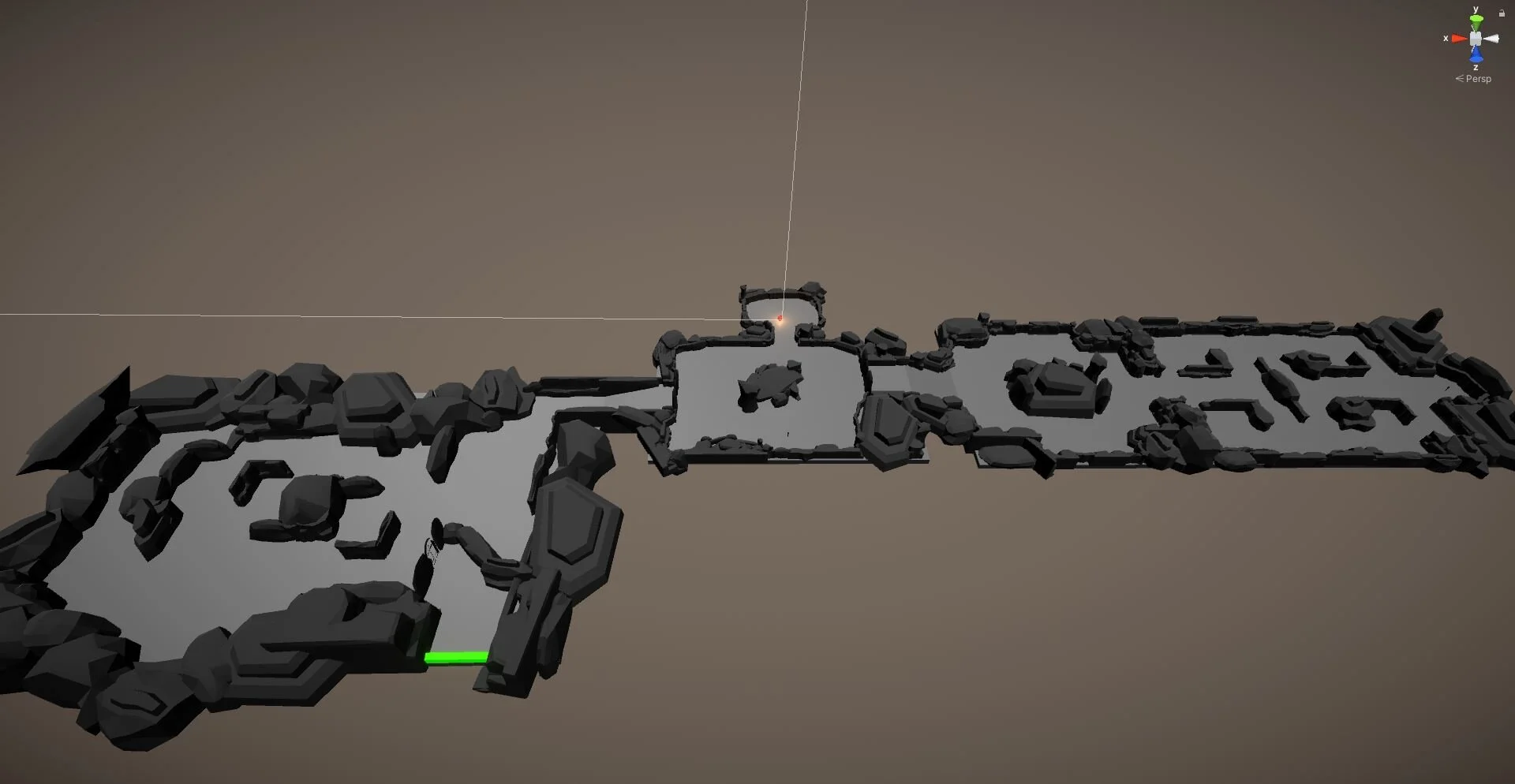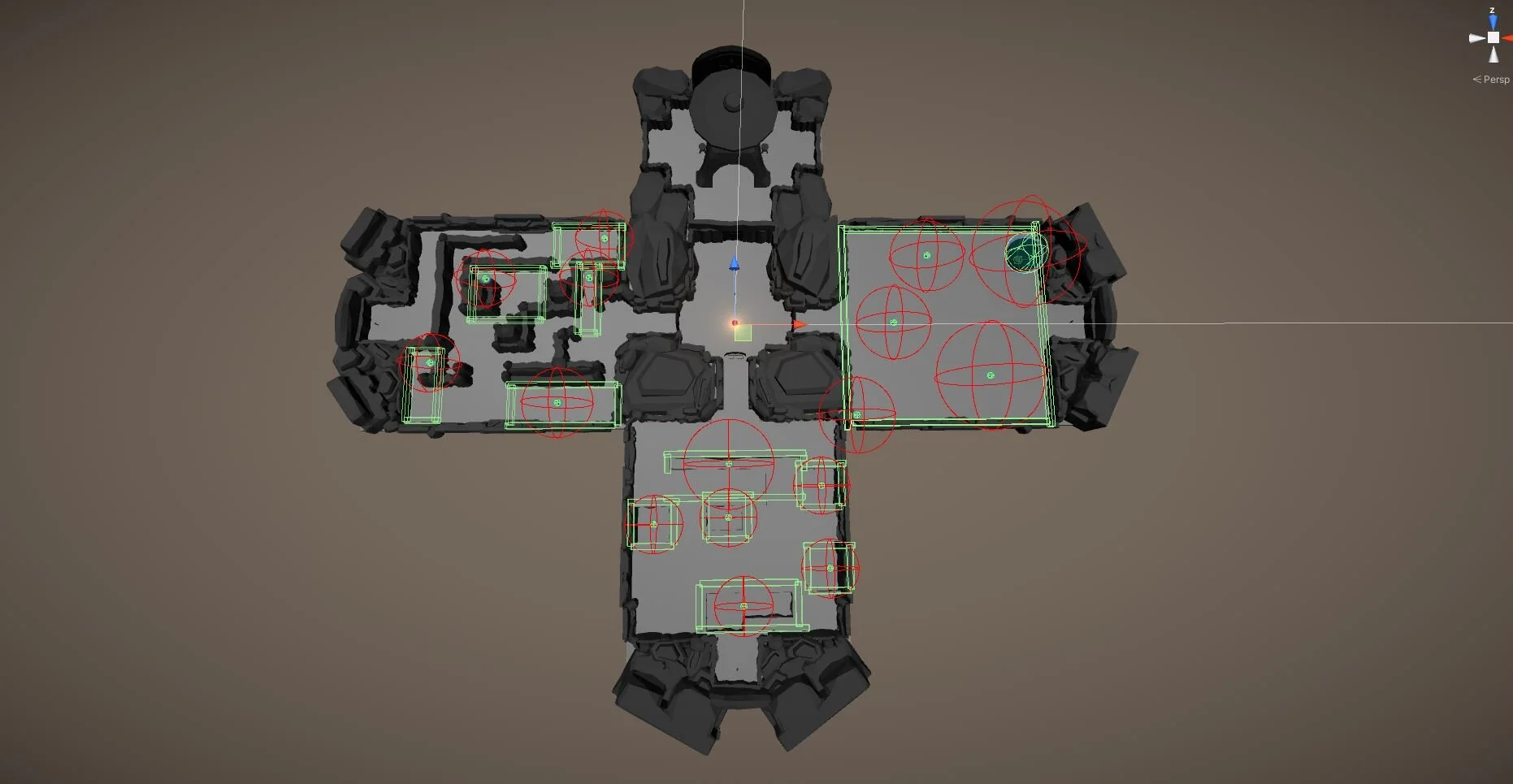The Last Ember
This project was created in a small group of 6 developers for the 2020 Global Game Jam, with the theme of “Lost and Found”. I was the Game Lead and one of the Level Designers for the development of this project. The game was created in Unity and is a single player, stealth, exploration game where you will be tasked with finding all your ember friends and reigniting the hearth.
https://globalgamejam.org/2021/games/last-ember-7
The development of the project started with a brainstorming exercise with all of our developers, thinking of a game that would fit well with the theme of “Lost and Found” and could be in the scope of a 48 hour development cycle. We eventually came across an idea of light being a core mechanic of our game, where players would need to be careful, as danger could lurk anywhere in the darkness, and by using their light to plan accordingly. We all really liked this idea and believed that it would fit our scope, thus, we submitted it for the Global Game Jam and where I took up the role as Game Lead and Level Designer.
As Game Lead, I really wanted to make sure that the light and dark ambiance was the focus of our project and to have that part made first, so that we could iterate and adjust it as soon as possible. When iterating on the lighting, I wanted to make sure that the player would be able to see their general surroundings clearly, but only see the rest in a dim light, making it hard to see what is ahead of the player. The reason why I wanted the player not to be able to see far ahead was to incentivize the player to send out their “friend embers” to scout ahead and light the path for them, giving the players a feeling of unease or uncertainty, but with the tools to help alleviate it for a moment. These friends would appear after interacting with a torch checkpoint, which respawns them there if they are attacked by an enemy, and stacks more embers the more torches they interact with.
Since I was also one of the Level Designers, I created an annotated map for the first level that would act as a sort of tutorial level to introduce the player to this game. The first area (center) is to make sure the player would start in a safe environment to get used to the darkness around them and the controls of the character. Once they reach the first torch checkpoint, they will be able to accomplish two things: They can open the door to the next area once comfortable and they can send out a friend ember to scout ahead of them. One of the benefits of our focus on darkness and limited visibility was that I was able to focus mainly on just the layout and pacing of the player. Although, I did not want to accidently have our level look repetitive, so I spent a lot of time making sure that our rock assets were placed and adjusted distinctly enough so that players would not be confused by seeing two very similar rock structure placements.
The next area (right) is for testing the player’s new found ability by presenting multiple paths, where one has an enemy and the other does not. While this may seem unfair and the player must guess which path is right, it will allow players to interact with the water droplet enemies, whether they run into the enemies themselves or discover them with their friend embers. After navigating to the end of the maze, they receive another ember friend and are able to open the last area of the level, however, this area also acts as a test to the players memory. If the player remembers the paths they went through, they can avoid being attacked by the enemy droplets and reach the next area. One thing I noticed was when the player returns from the maze area and they do not touch the first torch, they will respawn back at the maze torch. I wish that it was explained in the game that the torches can be “re-activated” to change respawns.
The final area (left) of the first level was a more natural area, where it is not an obvious “pick-a-path” layout and allows players to interweave through the different pathways. This is the “final test” of the players skills from the maze area to navigate and find out where the last torch and the exit are. This area allows the player to interact with the enemy AI behavior to see if they are able to outrun, outsmart or outmaneuver them, which our players after submission found quite enjoyable. We decided as a group to make the end very visible and obvious so that players would not reach the end and be fearful that there are more enemies ahead.
After finishing up the first level, I moved on to working on the third and final level, where I wanted to take the design differently than the first one. I wanted to give the players a “trial-esque” level, where the player is given three choices and is able to complete in any order the want to. This allows for players to try out one and can move on to another if they are tired of failing the same challenge. This is different than the other levels, as those had a more linear approaches to finding the exits, where as in this level, the player can already see their goals, they just need to reach them by going through the different challenges.
The challenge to the left is another maze area, however it has tighter corridors, enemies right around the corner, and a more complex design, making the player use their embers more often to make sure an enemy will not attack them right away.
The challenge below is another maze-like area, however, instead of walls, their are pits with enemies inside them to destroy the player, however, due to the strength of the player’s light they are able to see these holes easily; I would have changed this to have “illusion” blocks where the player would fall in the pits but would look like the ground was normal, making it so that the players must use their friend embers to see where they fall or delete the illusion block when an ember touches it.
The right challenge can be considered a sneaking maze or a speed maze where the player must get through a lot of enemies without “waking” the droplets up or run towards the torch before they get attacked. For this area, I specifically increased to the speed of the enemies to prevent players from simply waltzing through the area without any fear of the enemies actually reaching them.
When the player activates all three torches, they are able to open the main door where they started and reach “the hearth”, where all of the player’s missing friend embers are. This place was meant to be a mysterious and almost sacred area that the player has finally reached. When first entering, the player can only see so much, but once the hearth is activated, then they see how big it actually is.
As a reward for the player getting to the very end of the game, I made it so that the hearth would give the player over 100 embers to throw around and see the level with a lot of lighting. However, there was a bug where the players’ max embers were tied to how many torches they have touched, so if the player threw too many embers around before opening the final door, they would not be able to open it and would be unable to complete the game.
Working as a Game Lead and a Level Designer for a project with a 48 hour time limit was very trying but fulfilling once we submitted the project all content with the amount of work we produced. Everyone on the team did an outstanding job and produced a lot of quality work for the amount of time allotted and I could not have asked for a better team. Looking back at the project, there were a few things I wished we were able to polish more, such as the camera movement and the pause menu, however, I am still very proud to have worked on this project as a Game Lead and a Level Designer.
Working on this project was great experience for working in a collaborative way with a limited amount of time and being in multiple roles for a project. I have learned so much during this project, especially balancing between Level Designing and directing others for their work. I am extremely grateful for the opportunity to work on this unique project and thoroughly enjoyed working with the team and producing a game that I can be very proud to have worked on.








